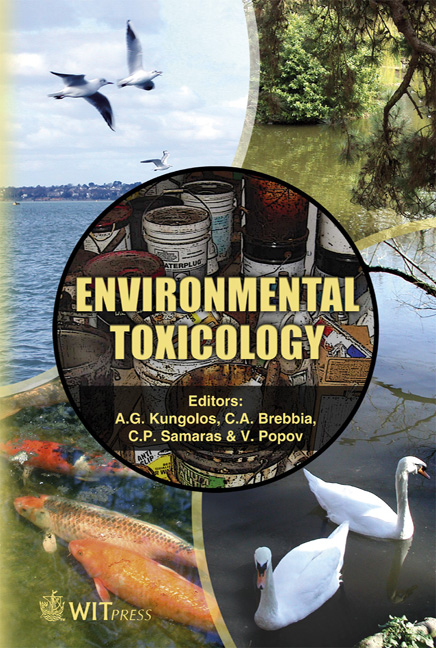The Durability Of Stabilized Sandy Soil Contaminated With Pb(NO3)2
Price
Free (open access)
Transaction
Volume
10
Pages
11
Published
2006
Size
459 kb
Paper DOI
10.2495/ETOX060271
Copyright
WIT Press
Author(s)
S. R. Zeedan, A. M. Hassan & M. M. Hassan
Abstract
The purpose of this study was to investigate the effectiveness of cement kiln dust (CKD) and silica fume (SF) for the safe disposal of hazardous waste contaminated sand soil with toxic heavy metal as lead nitrate (Pb (NO3)2. The curing time and the leaching test through immersion in water are test methods for studying the durability of the stabilized/solidified (S/S) hazardous wastes under the soaking condition that leachate through the compacted samples. These methods simulate the leaching by immersion process; S/S hazardous waste under particular landfill conditions, when the S/S contaminated soil is more permeable than its surrounding materials or when the deterioration of solidified waste has reached a statue that ground water can flow – through the compacted soil via the porosity system of S/S waste matrix. The sandy soil was mixed with mixture binder (10% CKD and 2% SF) and mixed by dissolving three different ratios of Pb(NO3)2 (O.5, 1, and 3%) in tape water and compacted. UCS was determined for 1 and 3 month curing (100% moisture humidity) and for one year soaking in tap water. The concentration of (Pb +2 and NO --3 ) which leachate from the compacted samples to the soaking water was recorded along a time of one year soaking. The UCS was decreased for the compacted samples have high levels of lead nitrate. The leaching of Pb was decreased during the soaking time for the two curing times (30 and 90 days) for the three ratio of Pb(NO3)2. Keywords: solidification/stabilization, leaching, CKD, SF, heavy metal.
Keywords
solidification/stabilization, leaching, CKD, SF, heavy metal.





